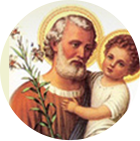POP ART
Pop art is an art movement that emerged in the United Kingdom and the United States during the mid-to late-1950s. The movement presented a challenge to traditions of fine art by including imagery from popular and mass culture, such as advertising, comic books and mundane mass-produced objects. One of its aim is to use images of popular cultures in art, emphasizing the banal or kitschy elements of any culture, most often through the use of irony. It is also associated with the artists’ use of mechanical means of reproduction or rendering techniques. In pop art, material is sometimes visually removed from its known context, isolated, or combined with unrelated material.
What type of art is most popular?
Pop Art is perhaps one of the most well-known and well-loved art styles throughout history and for good reasons too. It is, after all, a re-imagination of sorts that “popped up” and took inspiration from mass or popular cultures, particularly American consumerist culture, hence the name.
What makes a painting Pop Art?
In 1957, Richard Hamilton described this style as “Pop art is: popular, transient, expendable, low-cost, mass-produced, young, witty, gimmicky, glamorous and big business.” Often employing mechanical or commercial techniques such as silk-screening, Pop Art uses repetition and mass production to subvert.
Pop Art Characteristics
- Recognizable imagery: Pop art utilized images and icons from popular media and products. …
- Bright colours: Pop art is characterized by vibrant, bright colours. …
- Irony and satire: Humour was one of the main components of Pop art.
- Anushri Krishna M & Abinayaa V of Std. IX




No Comments